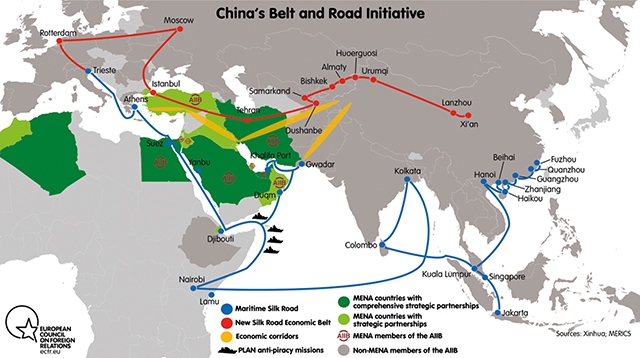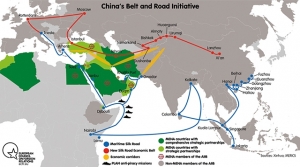Securing the Belt & Road Initiative: China’s Approach to Georgia
Op-Ed
As China's huge Belt and Road Initiative (BRI) expands to cover more and more states across Eurasia, the urgent question as to how Chinese economic assets should be protected against external threat, be it terrorist or potential enemy state, has arisen among scholars of the Chinese economic initiative.
Surely, no definite answer can be expected. Considering the size of China and the amount of finances she is pumping into a great number of states in often radically different geographic areas, the question of measures will quite naturally differ from country to country and region to region.
China has never been open to the outside world. The Silk Roads in ancient and medieval times served as the only land connection between China and the western Eurasia. However, even there, the Chinese rarely ventured beyond the Central Asian region. This means that the current Chinese activities beyond the state borders are unlikely to be part of a grandiose, already well established, strategy. On the contrary, the Chinese are now adapting to various challenges they face abroad and offering a different approach to each region.
For example, on its western border, where there are issues of long-standing Uighur resistance, the Chinese have opened at least two military outposts to secure the unstable Tajik border and the Wakhan Corridor which serves as the only geographic connection China has with Afghanistan.
On its eastern frontier, where China meets the US and its allies in the South China Sea, Beijing is gradually gaining advantages by increasing its patrolling activities and building outposts.
The third example is as straight as possible: construction of a full-scale military base at geographic choke-points where global economic activity is taking place, such as Djibouti, at the Red Sea.
As these examples show, we’re dealing with several very diverse approaches. All of them depend on the geographic, military and economic situation in the particular region.
We should keep in mind these geopolitical settings when discussing China’s interests around the South Caucasus economic and transportation corridor.
Since 2013, when the BRI was announced by the Chinese president, both Georgian politicians and analysts have been quite enthusiastic about the prospects of the country's involvement in the project.
What was rarely if at all mentioned was the fact that the BRI did not actually include the South Caucasus route among its major six trade corridors. Indeed, the Russian, Central Asian and Iranian/Pakistani routes are far more efficient (because of the lack of geographic barriers) and much larger in economic scope than that of the South Caucasus.
However, Chinese moves in Georgia over the past year or so could signal a shift in its approach to the South Caucasus corridor (which includes not only roads and railways, but also Georgia's Black Sea ports) and Georgia’s potential inclusion in the BRI. The increasing attention which was paid to the Silk Road Forum and the visit of the Chinese Minister of Foreign Affairs (the first in more than 20 years), suggests at least interest in the Anaklia Port.
It should always be kept in mind that the BRI is an evolving project, constantly adapting to new challenges and seeking new opportunities. This approach is at the heart of Chinese foreign policy: there is no set of geopolitical moves Beijing will necessarily use. Like other rising powers in world history, China is adapting itself to the outside world, but will also try to adjust the world order to its own needs. There are plenty of signs that the Chinese are meticulously working to expand the country’s influence without any rush moves. The rise of new world powers in history never took place overnight, but was rather a slow and at times daunting process.
Therefore, it is not entirely clear at present what kind of cooperation China would be choosing with the South Caucasus, and Georgia in particular. However, the pushback from the US will be defining and there will remain many obstacles to Beijing’s moves in the region.
By Emil Avdaliani
Image source: ecfr.eu











